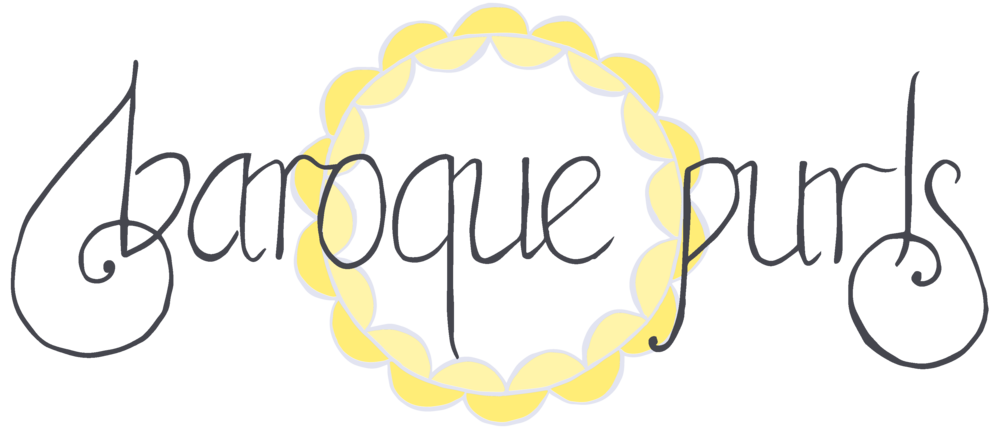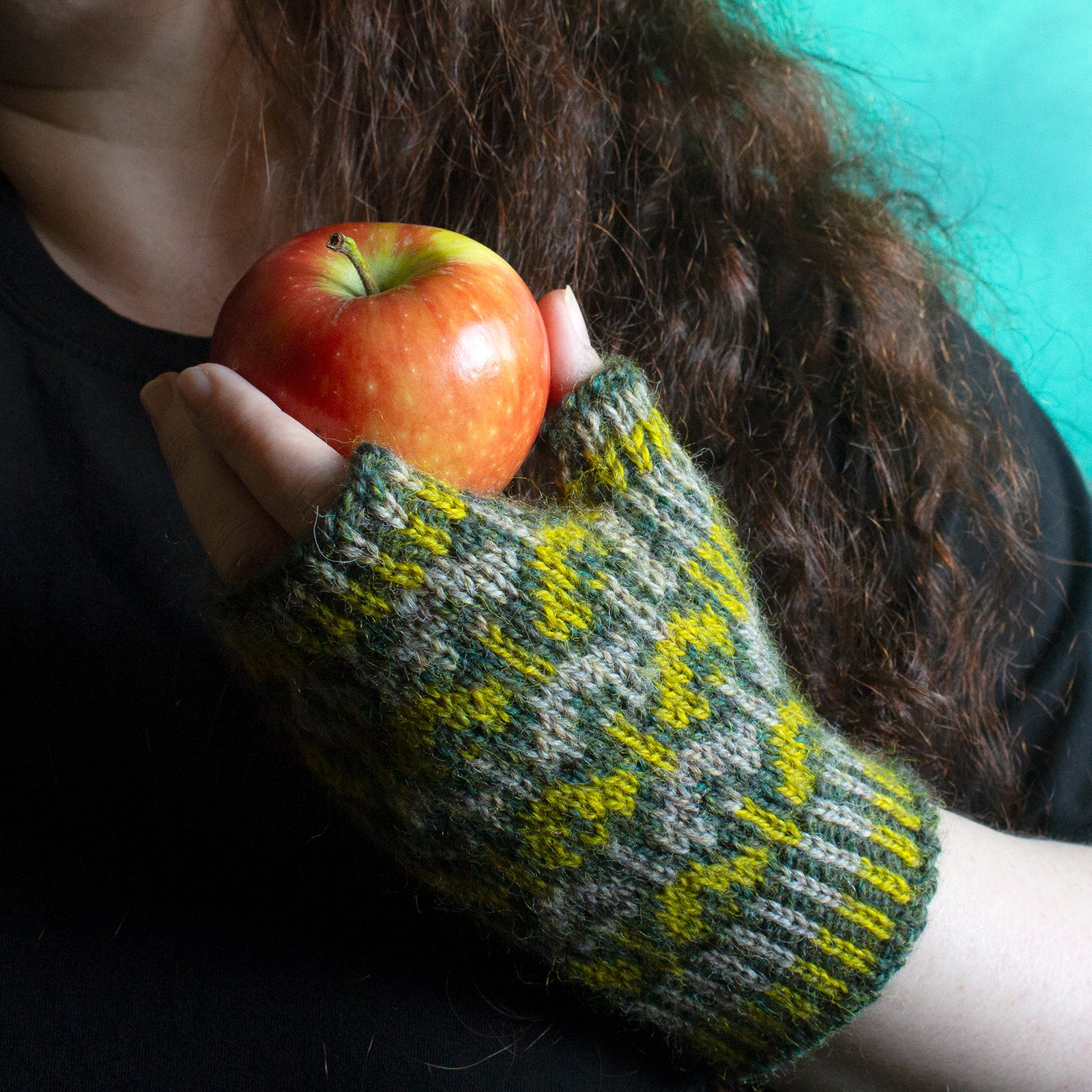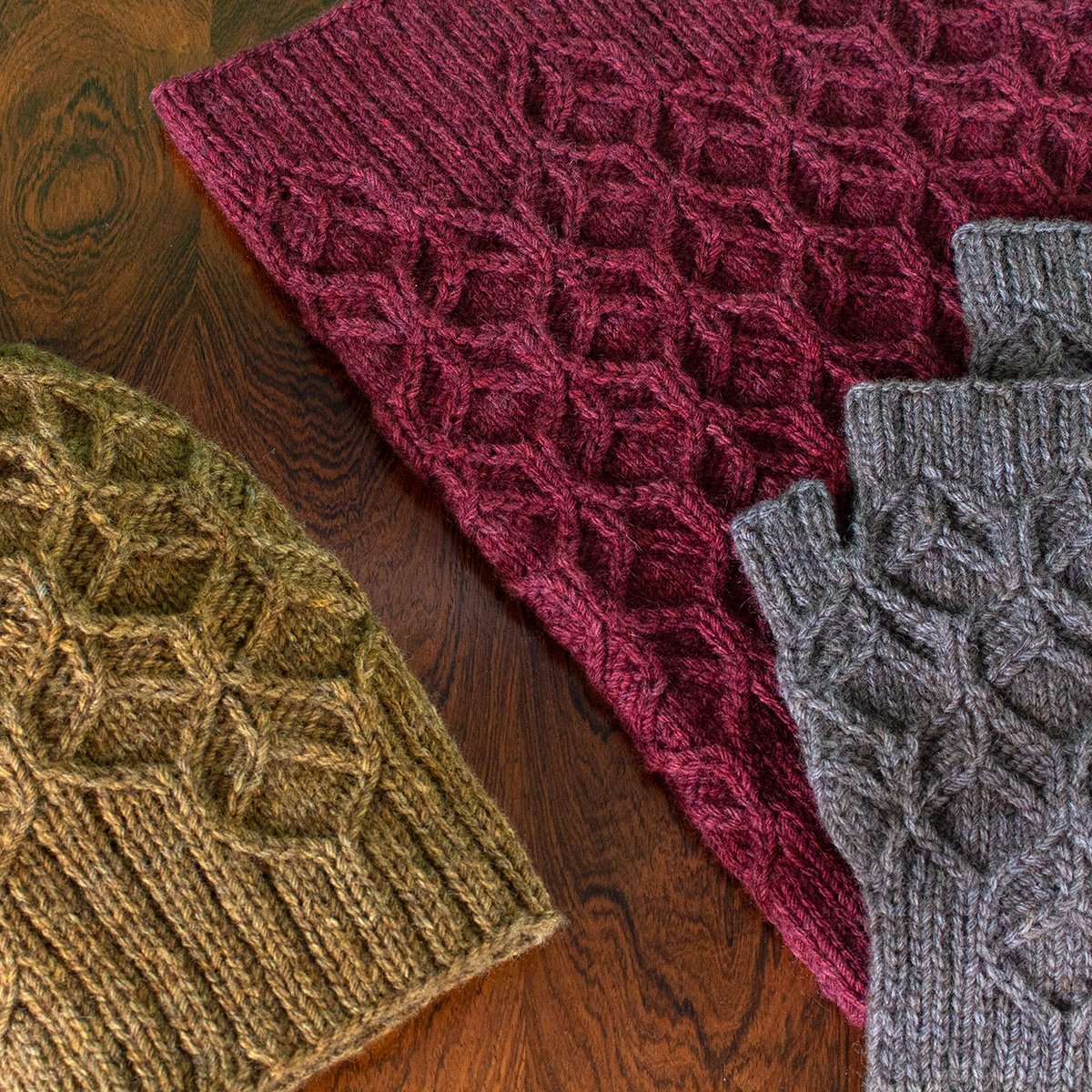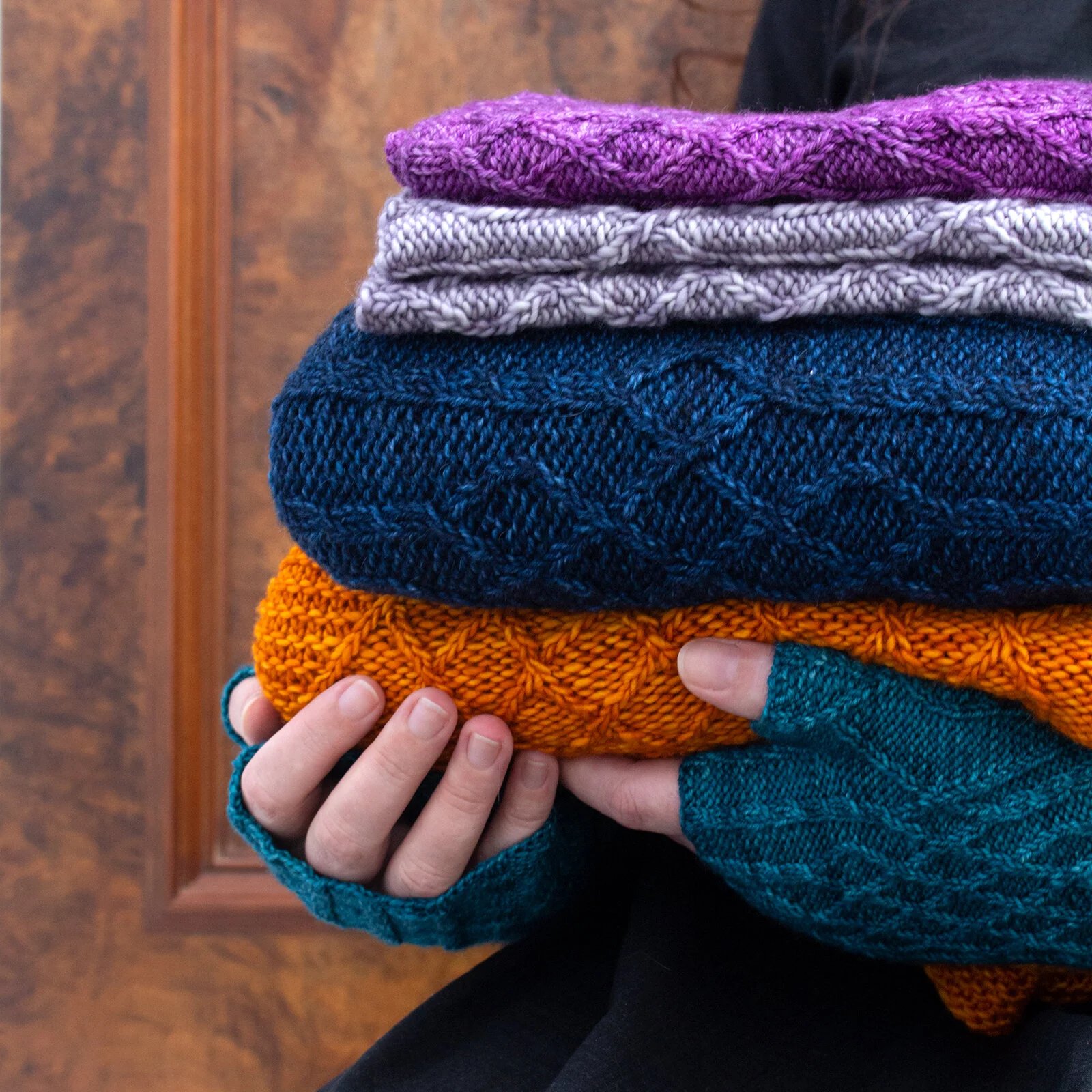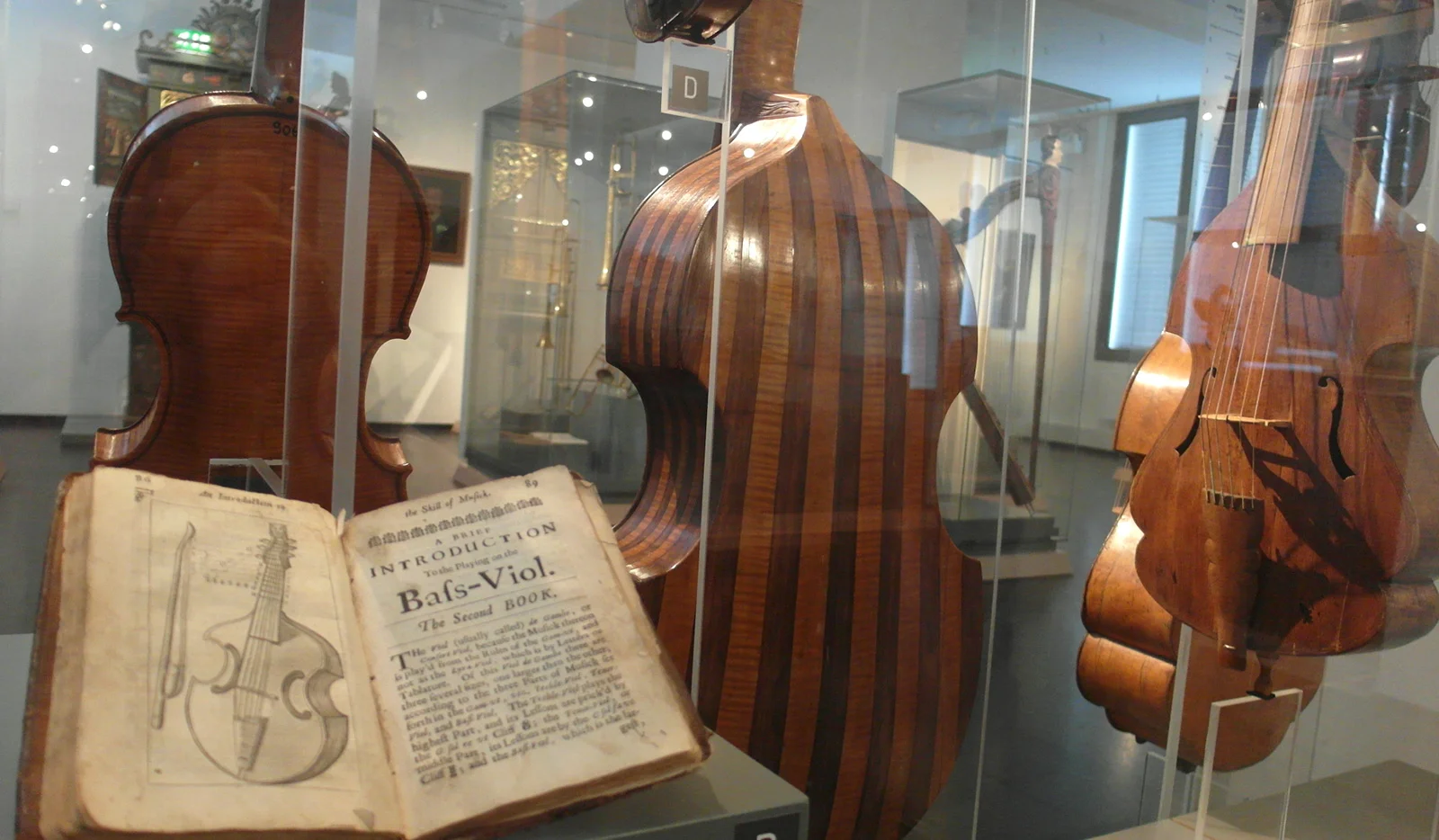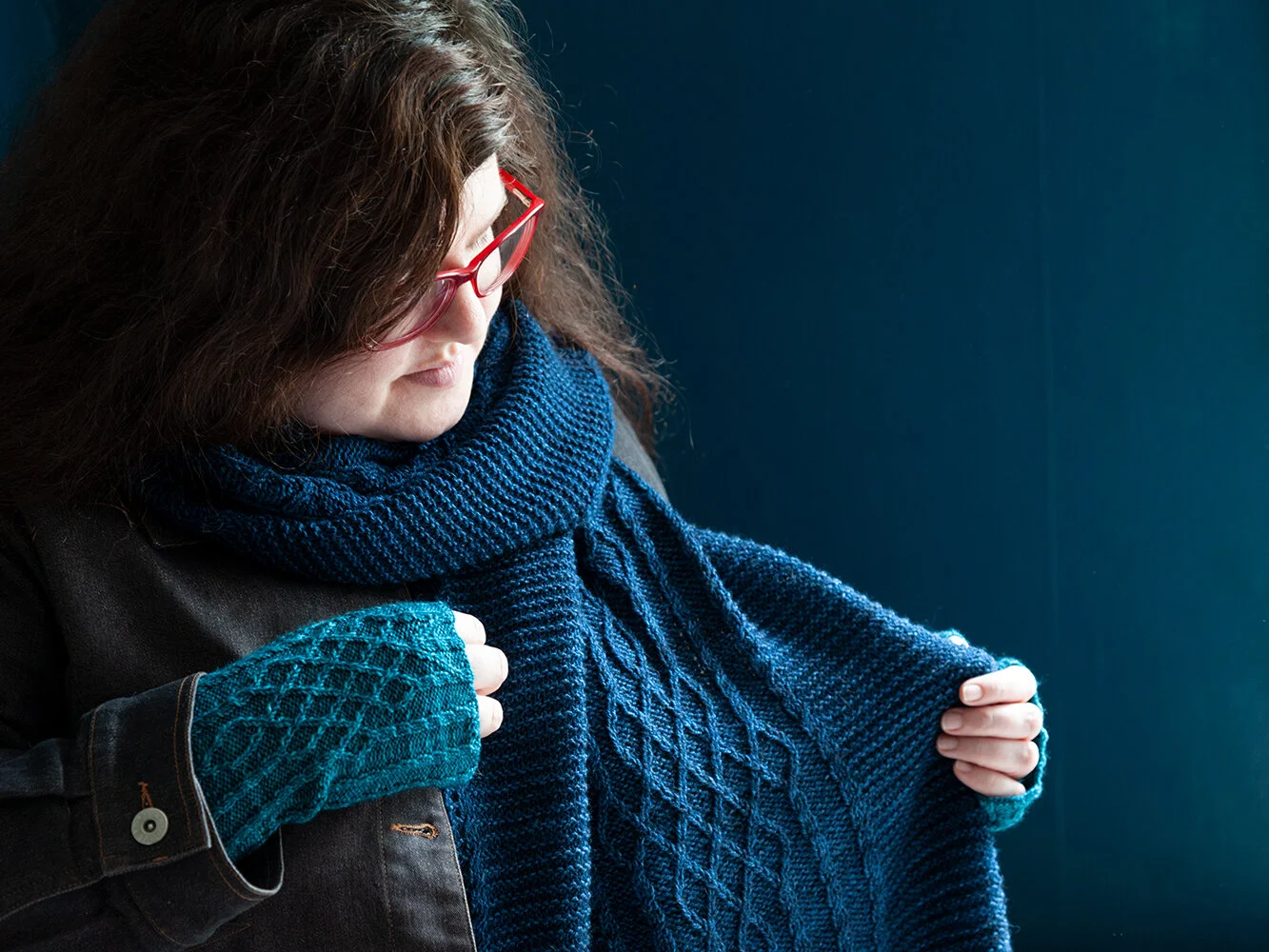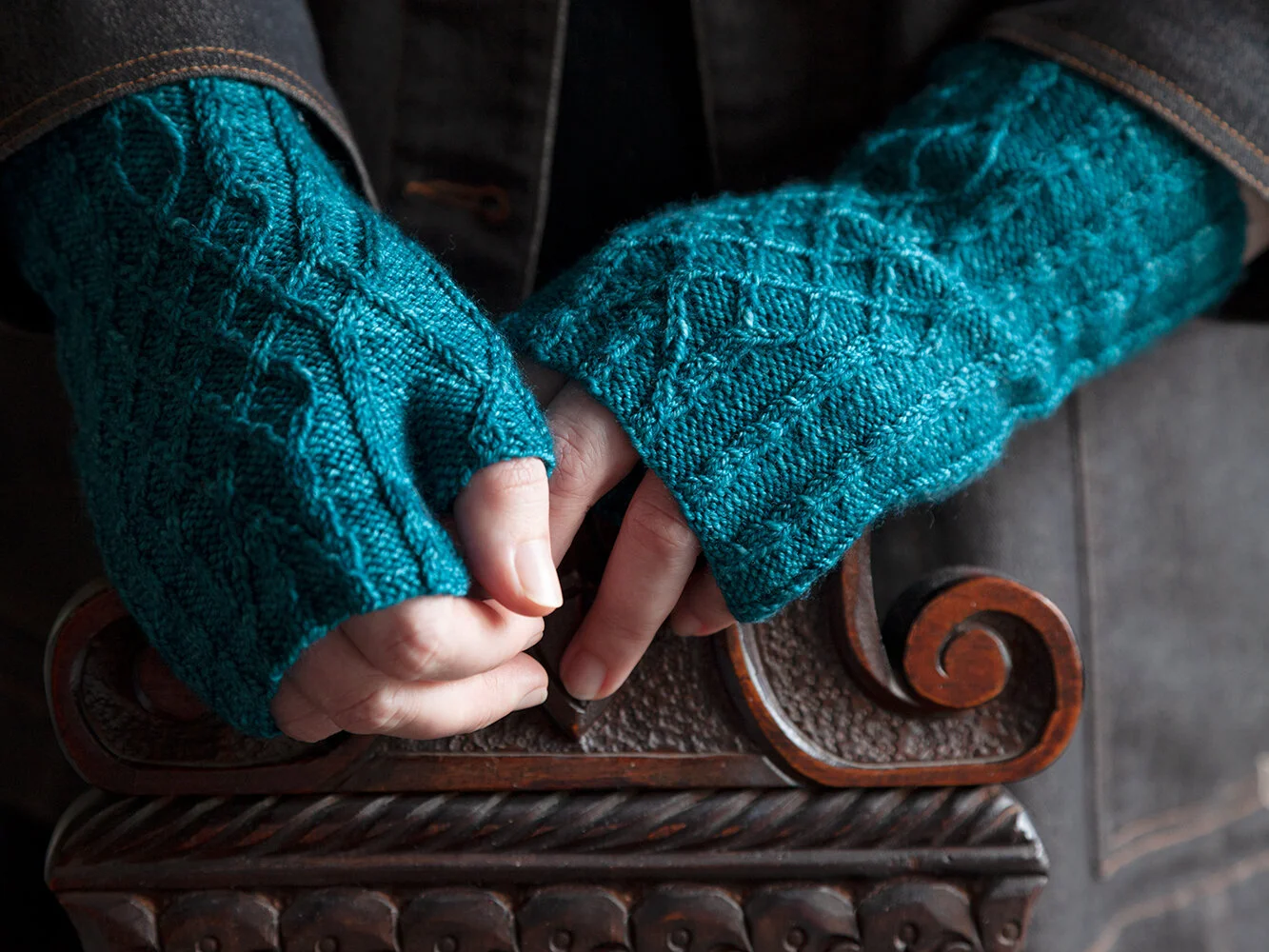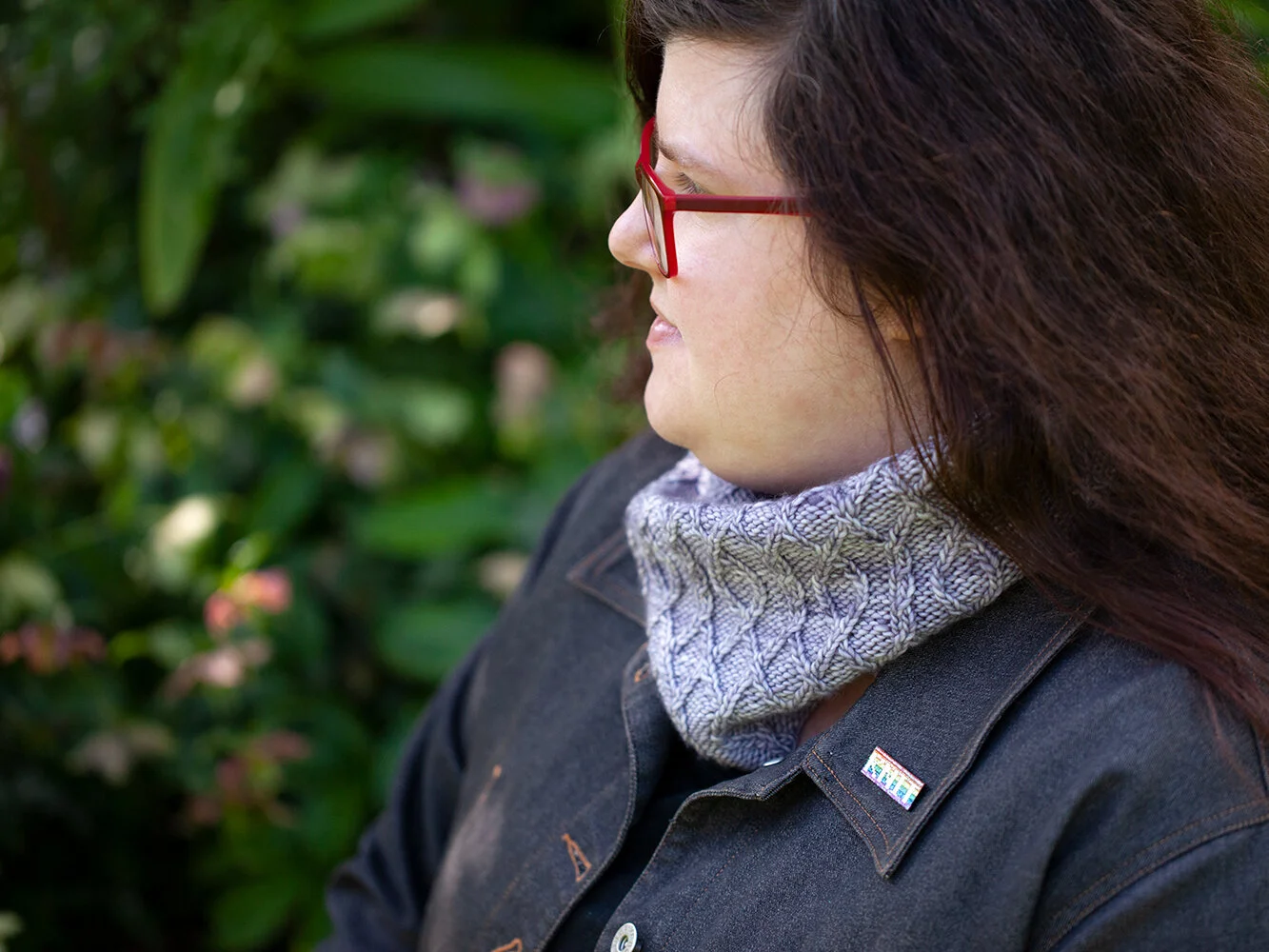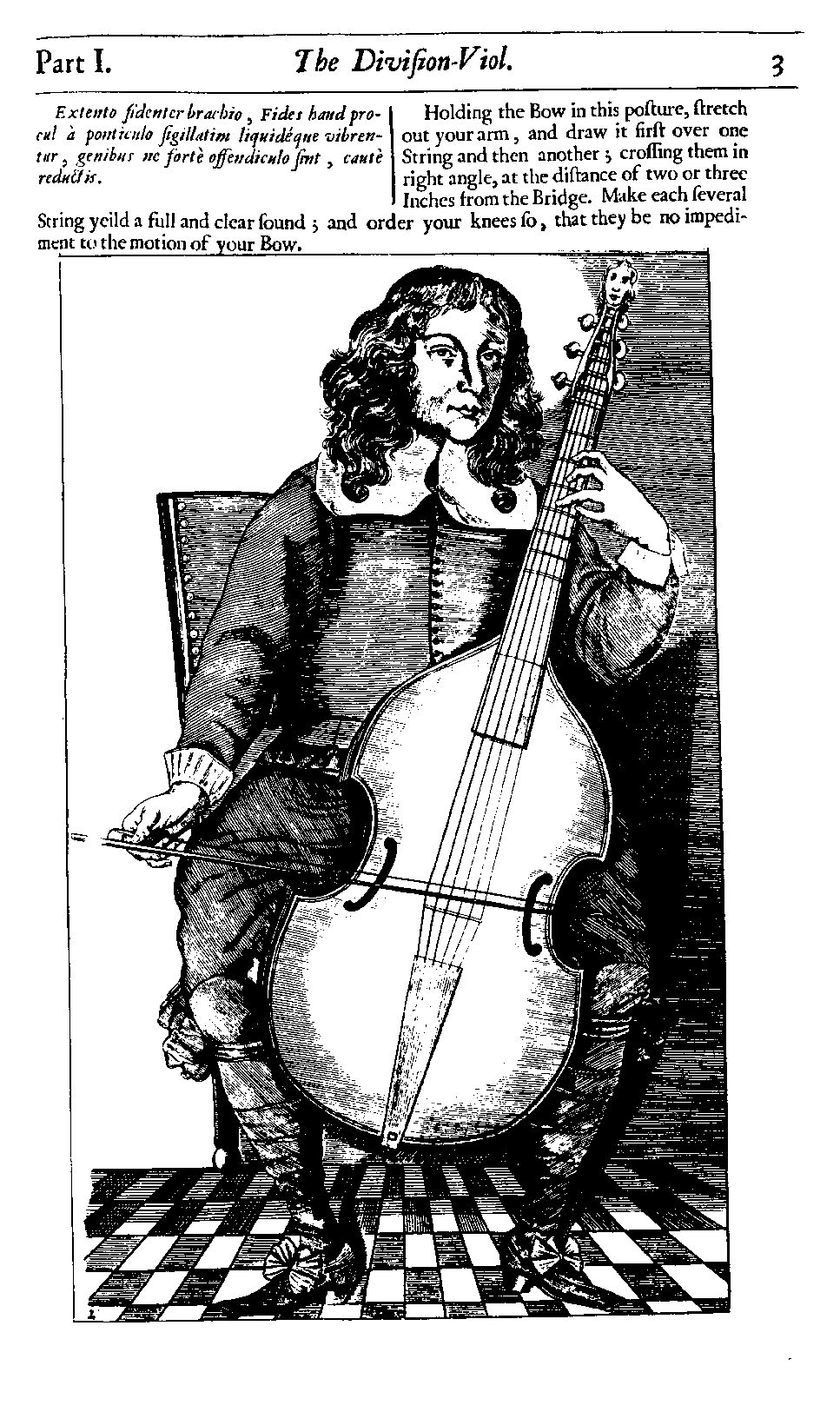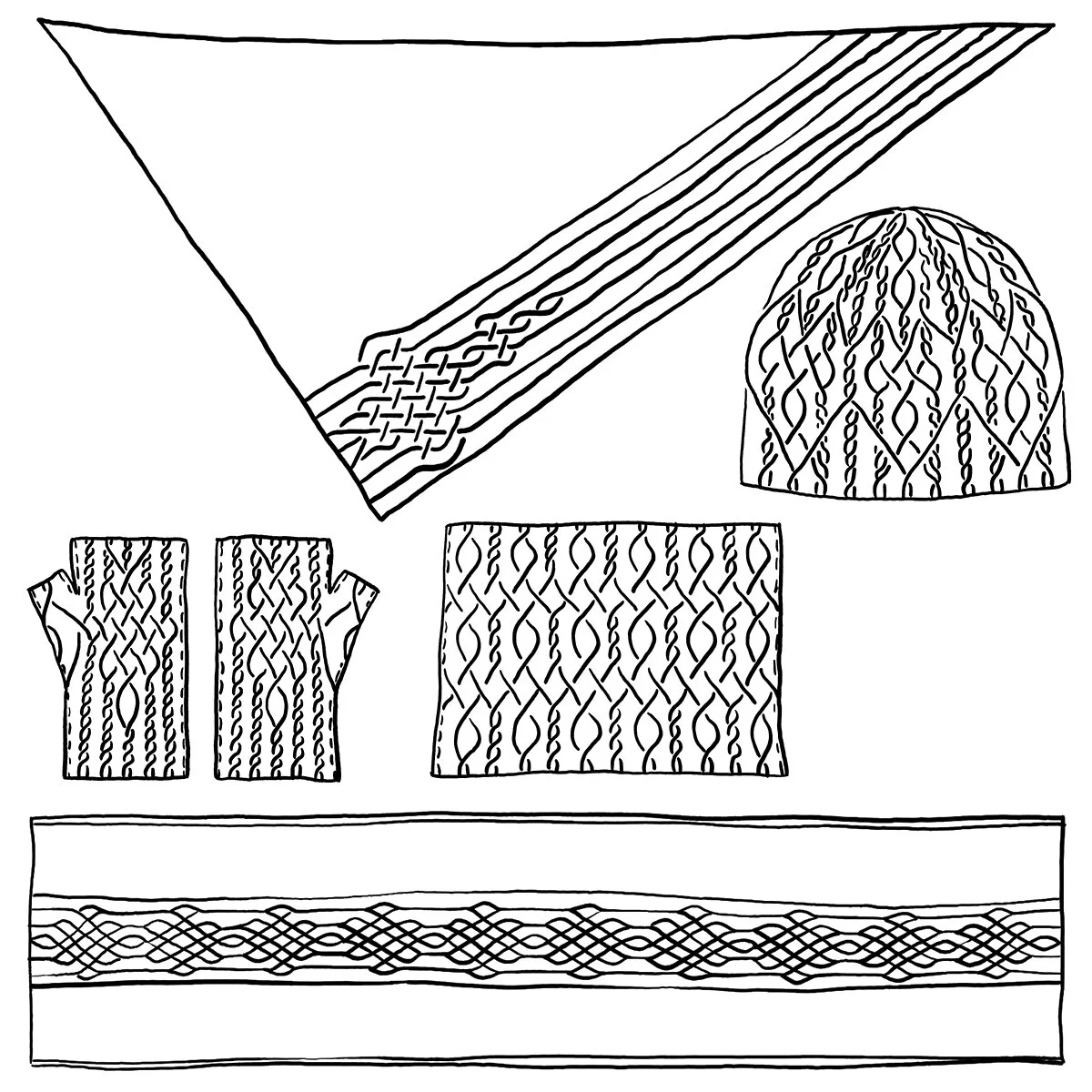Fellow colourwork lovers, this one’s for you! I’ve designed the Braeburn Mitts to show off three colours of Appledore DK, and I couldn’t resist naming them after my favourite variety of apple, which is always one of the first things I buy when I fly home to New Zealand. Because you only need a small amount of each colour, these mitts are a perfect project for mini skeins and odds and ends. The pattern includes three sizes, and options are included for shorter or longer cuffs.
Inspiration & design journey
This is one of those designs that all started with the yarn. I had a shade card and some little samples of this lovely woolly heathered yarn, and I decided a pair of colourwork mitts would be the perfect way to show it off. I wanted to use three colours instead of my usual two for extra richness, and I wanted to use a smaller motif to make it easy to include multiple sizes. After a lot of charting and swatching with my samples I had a motif I loved, of highly stylised little trees. The next puzzle to solve was the thumb gussets, which went in a few directions before I settled on a pattern of clean vertical lines branching out from the increases along the edge.
Yarn requirements
To knit these mitts you will need small amounts of three colours of light DK or sport weight yarn suitable for colourwork. For my two sample pairs I used mini skeins of Appledore DK, a blend of 40% Devon Closewool, 40% Romney, and 20% Exmoor Blueface wool, with 68yds/62m per 25g mini skein. For the smallest size you will need one mini skein of each colour, and for the two larger sizes you will need two mini skeins of the MC or background colour and one each for the contrast colours CC1 and CC2.
The Appledore colour names are wonderful, and are all taken from apple varieties. My samples feature the shades ‘Hangy Down’, ‘Whimple Wonder’, ‘Golden Knob’, ‘Foxwhelp’, and ‘Pig Snout’!
My little yarn-thief Miss Tiny had a great time wrestling with my mini skeins before I managed to rescue them! She loves a good woolly yarn.
Special techniques
The pattern includes a few of my favourite tips for knitting beautiful colourwork, including on colour dominance, swatching, and managing tension. One additional trick, which you may have used before when knitting stripes, is ‘carrying up’ each colour until you need it again instead of breaking the yarn and having a daunting number of ends to weave in. I found I had nice tidy colour changes if I twisted my CC colours together every couple of rounds.
Using mitten blockers is another great trick for nicely finishing your mitts - I made my own out of takeaway container lids using this tutorial by designer Åsa Tricosa: Glove & Mitten Blockers in 10 min.
Braeburn Mitts features:
Fingerless mitts in stranded colourwork featuring stylised tree motifs and bold corrugated ribbing
Three sizes are included, to fit 5.5-6.5 (7-8, 8.5-9.5)”/14-16.5 (18-20.5, 21.5-24)cm palm circumference with -0.5”/1.25cm to +0.5”/1.25cm ease, and options are given for shorter or longer cuffs
Requires 66 (79, 104)yds/60 (72.5, 95)m of MC or background colour, 30 (36, 50)yds/27 (33, 46)m of CC1, and 30 (36, 44)yds/28 (33, 40)m of CC2 in light DK or sport weight yarn (shown in John Arbon Textiles Appledore DK)
Size 2 shown in MC ‘Hangy Down’, CC1 ‘Whimple Wonder’, & CC2 ‘Golden Knob’, with short cuff, and Size 3 shown in MC ‘Foxwhelp’, CC1 ‘Golden Knob’, & CC2 ‘Pig Snout’, with long cuff
Choose a wool or wool-blend yarn suitable for colourwork, in colours with sufficient contrast
Dimensions, relaxed after blocking: 6 (7.5, 9)”/15.25 (19, 23)cm circumference, and 6.75 (6.75, 7.5)”/17 (17, 19)cm total length with short cuffs for Sizes 1 & 2 and long cuffs for Size 3.
Find out more about my Braeburn Mitts pattern, including Ravelry and Payhip purchase options.
